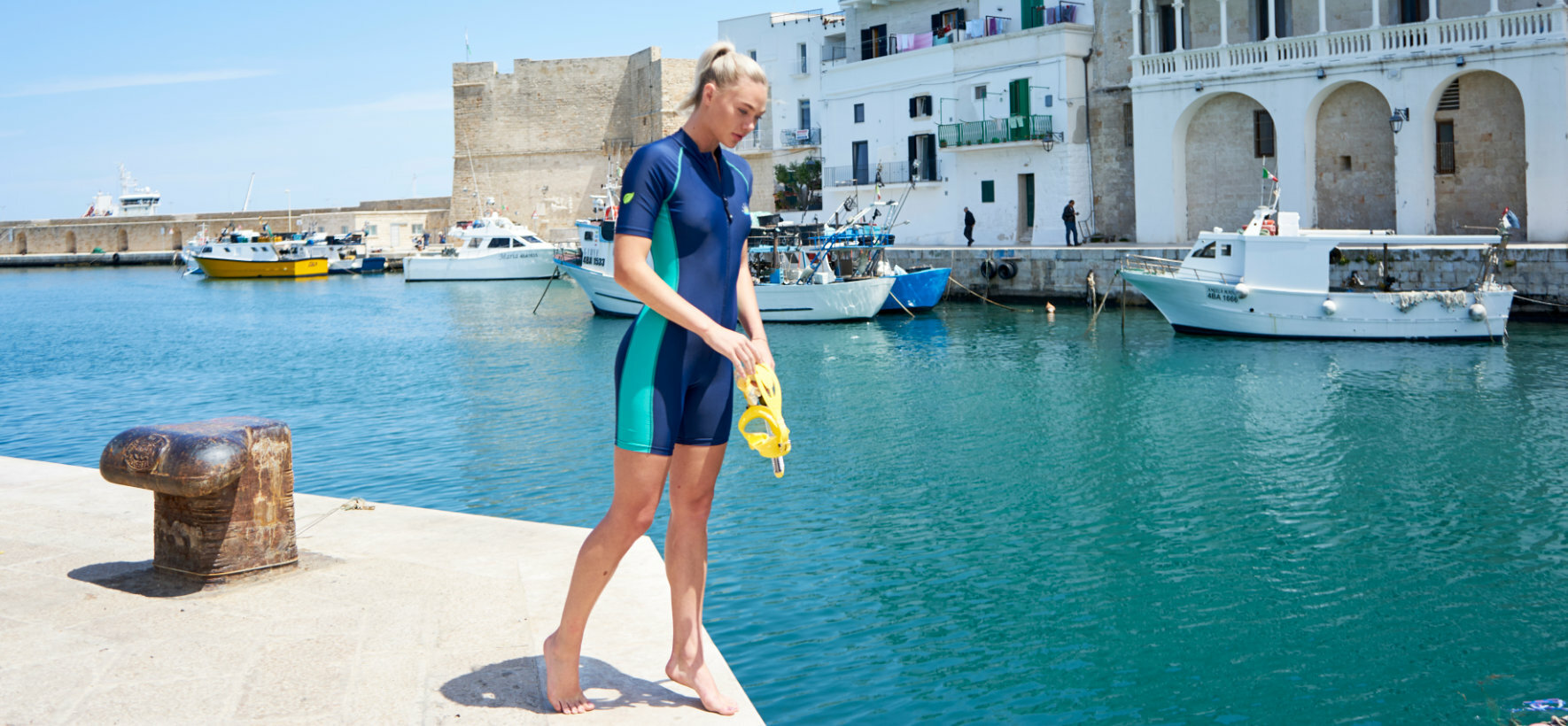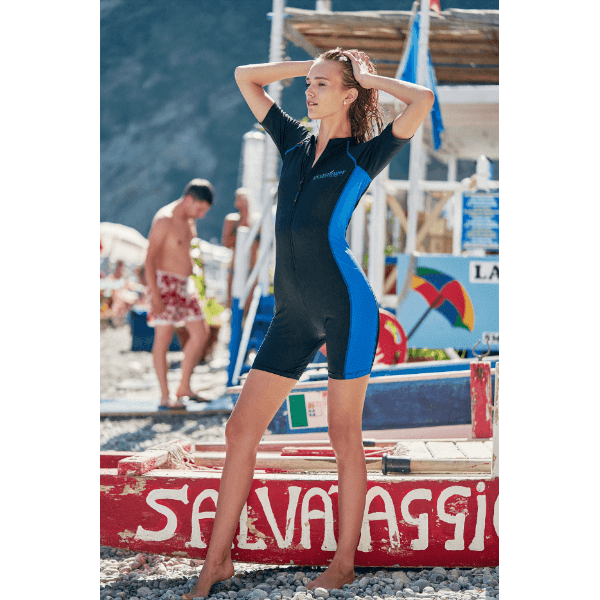What Is The Difference Between Regular And Sun Protection Swimwear?
There are 3 key differences between regular and sun protection coverup swimwear:
1. Fabric Type: Regular and sun protection swimwear are usually made from special type of stretch fabric that is suitable for use in water, mostly made from nylon, lycra, elastane, spandex or polyester yarn. The quality and performance is linked to the fabric composition example nylon/lycra or polyester/pbt and to the weight example 170 to 200 grams per square meter (5 to 5.9 oz per square yard), however to achieve uv protection status the fabric need to be tightly knitted in order to block the sun uv rays from getting through and reaching the skin, hence some regular swimwear fabrics are not suitable for sun protection. The highest uv protection ratings a fabric can achieve is UPF50+ which blocks over 97.5% of the sun uv radiation according to Australian Radiation Protection and Nuclear Safety Agency (ARPANSA).
2. Design Style: Regular swimwear tends to follow fashionable trends and personal tastes where more skin is exposed, while sun protection swimwear takes into consideration the need to cover as much skin as possible. Full body coverup swimwear designs such as stinger suits, dive skins and sunsuits covering the arms and legs have the ability to keep the skin protected all day long from the harsh uv rays which causes sunburn amd skin damage, jellyfish stingers and sea lice.
3. Body Fit: Skin protection swimsuits are designed for a snug body fit which provide adequate uv protection and enhances performance. Depending on the style and size selection it is recommended to follow each product description and sizing tables for best fit; Some styles offers relaxed fit (we recommend choosing your clothing size or one size smaller) while others offer slim fit (we recommend choosing one size up from your clothing size).









